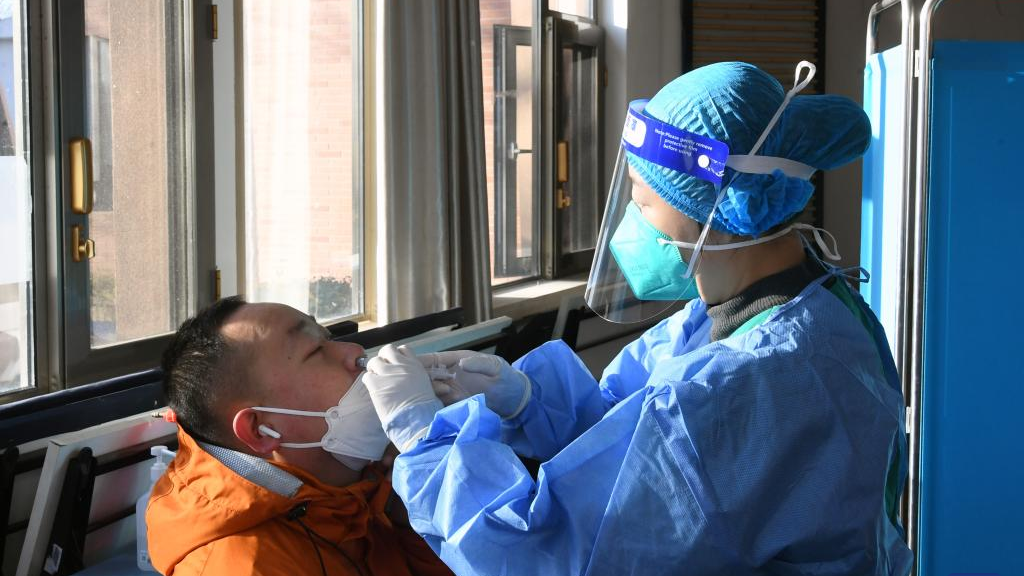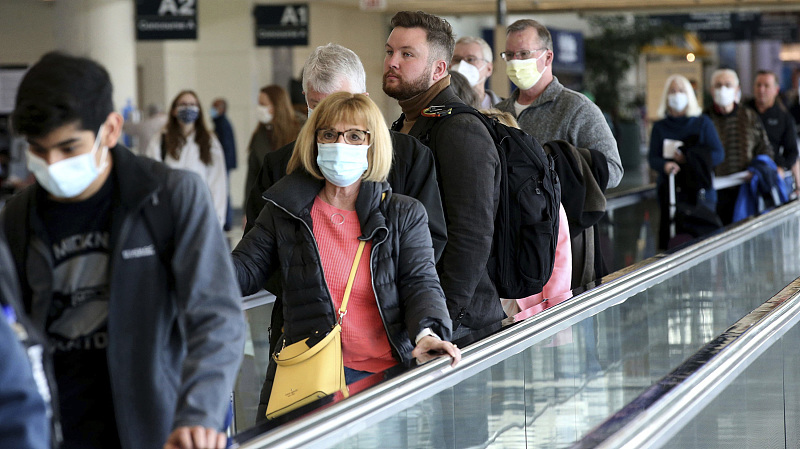
A medical staff administers a second booster dose of COVID-19 vaccine for a resident through nose at a temporary vaccination site in Haidian District, Beijing, capital of China, December 17, 2022. /Xinhua
A medical staff administers a second booster dose of COVID-19 vaccine for a resident through nose at a temporary vaccination site in Haidian District, Beijing, capital of China, December 17, 2022. /Xinhua
Editor's note: Curtis Stone is an international relations expert, an editor and commentator. The article reflects the author's opinions and not necessarily the views of CGTN.
The COVID-19 pandemic has presented a unique and challenging situation for governments and health systems around the world. On the one hand, there is a need to control the spread of the virus in order to protect public health. On the other hand, there's also a need to consider the economic impacts of the pandemic and importance of economic growth. Balancing these two competing priorities is a challenging task for any country, but China has striven to strike the right balance between COVID-19 control and economic growth with positive results on both fronts.
There is a no one-size-fits-all approach to COVID-19 prevention and control. The best approach depends on the specific circumstances of each country, as well as the nature of the COVID-19 outbreak. China has done a remarkable job at keeping its country protected over the last few years, while making efforts to keep the economy humming. As of December 16, 2022, over 647 million confirmed cases and 6.64 million deaths have been reported globally, according to the World Health Organization. In the United States alone, nearly 100 million confirmed cases and over one million deaths have been reported. China, which is the most populous country on the planet, has reported the lowest incidents' rate and death toll of COVID-19 among all major countries.
These numbers show that China's efforts to control the spread of COVID-19 have minimized the impact of the virus nationwide. While there have been costs associated with the tough control measures, such as the disruption of travel and trade, the cost-benefit balance tipped in favor of controlling the spread of the virus. Now, compare these results to other major countries such as the United States, which leads the world in the number of reported COVID-19 cases and deaths, and the difference is like night and day. What this shows is that how a country responds to a crisis such as COVID-19 does matter.
The United States has largely failed to control the spread of the virus. The U.S. government initially downplayed the severity of the outbreak and resisted measures to slow its spread, and a patchwork of measures made it difficult to coordinate a cohesive response. Moreover, the pandemic has been highly politicized in the U.S., which has led to the spread of misinformation and confusion about the virus. When control measures were put in place, they were often inadequate. The lack of coordination made it more difficult to control the virus.

Air travelers use the moving walkway toward their gate at Midway International Airport in Chicago, Illinois, U.S., April 19, 2022. /CFP
Air travelers use the moving walkway toward their gate at Midway International Airport in Chicago, Illinois, U.S., April 19, 2022. /CFP
While the U.S. response to the pandemic can be summed up as too little, too late, and often inadequate, due in no small part to a toxic domestic political environment, China's response can be characterized as swift and strong. Rather than downplay the severity of the pandemic and attack science or ridicule basic protective measures, the Chinese government acted swiftly to implement various measures to prevent the spread of the virus. Regrettably, China's achievements in its fight against the virus have been mostly muted in the Western world, while media coverage of China is often unfair, which has muddied the waters of China's COVID-19 approach. This has led to much mistrust over China's actions.
The media has a vital role to inform the public. It's important for media outlets to report on COVID-19 policies accurately, regardless of where they get implemented. Misrepresenting the facts can lead to misperceptions. Western media reports that focus on a single aspect of China's response, such as its use of lockdowns, often fail to take into account its overall approach to control the spread of the virus, and reports that present a one-sided view of China's response to the pandemic, or that cherry-pick certain facts or data, give a distorted view of the situation.
The Western media has long smeared China, often portraying the country in a bad light by focusing on negative aspects and ignoring its positive achievements. There is a strong bias against China from the West, creating a distorted view of the country.
China's COVID-19 approach is not without its limitations, but the country has made tremendous progress tackling the virus and is trying to strike the right balance between COVID-19 control and economic growth. As China enters a new phase of this battle, it's important for China to continue to optimize its COVID-19 response to help the country move forward. Equally important from an information perspective, though, is how we view and understand China in the Western world. Western media outlets should be more balanced and nuanced over their coverage of China and recognize the complex and challenging context in which China has had to respond to the pandemic.
(If you want to contribute and have specific expertise, please contact us at opinions@cgtn.com. Follow @thouse_opinions on Twitter to discover the latest commentaries in the CGTN Opinion Section.)